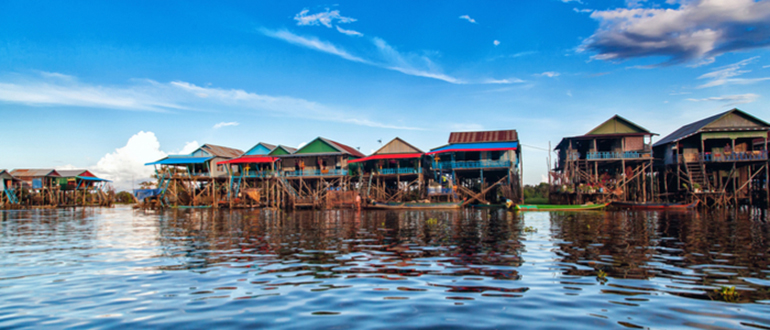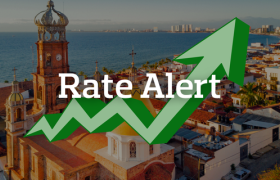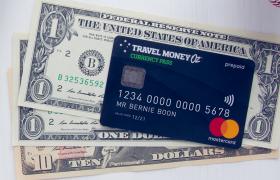Quick Contact

18th April 2017
Asia has captivated Aussie travellers for years. From Japan's snow-capped mountains to the wild jungles of Malaysia; from India's hot curries to China's juicy dumplings; and from the temples of Angkor to the skyscrapers of Singapore.
And the list of wonders is only increasing! Like wondering where you’ll find an ATM!
Travel Money in Asia
If you're planning a holiday adventure in Asia, you’ll need to know the currency you’ll be using, how much you should take and how you can access it away from home. We recommend having a mix of options when it comes to your travel funds, including:
- Cash for when you land
- A prepaid travel money card for future funds
- A debit or credit card for emergencies (so you’re always covered).
These days, travellers are unlikely to carry all of their travel funds as cash. It’s unsafe and uncomfortable. But Asia is vast and not every country uses bank cards as regularly as we do in Australia. So what do you take?
We’ve done the research to answer those tricky travel questions in some of the countries in Asia that Aussies love to visit.
Indonesia
If you’re heading to the ever-popular Bali, you’ll have no problems finding an ATM or using your Visa, Mastercard debit or credit cards. But, if you go to any of the more remote places in Indonesia, like the Maluku Islands or Papua, your cards won’t be worth much.
When using an ATM in Indonesia, your foreign bank card should be automatically detected – giving you the option to have the screen displayed in English or Indonesian. The ATM will dispense Indonesian Rupiah, usually in denominations of Rp 50,000 (around AUD$5*) or Rp 100,000 (around AUD$11*), and you will likely be limited to withdrawing around Rp 2 million (around AUD$220*).
The withdrawal limit is set by how many bills can be physically pushed through the ATM dispenser, so it may change from machine to machine.
Thailand
ATMs are located just about everywhere in Thailand and many businesses operate on a cash only basis, so you’ll need to have cash on you during your holiday. Most Thai banks charge a 200 baht fee per withdrawal (around AUD$8*) from a foreign bank card and you’ll also be charged a fee by your bank for using your Aussie card overseas, so this is something to keep in mind.
Most ATMs will allow you to withdraw up to 20,000 Thai Baht (around AUD$840*).
ATM fraud and card skimming are fairly common in Thailand, so monitor your statements, don't share your PIN, cover your hand while entering your PIN and keep your card safe place at all times.
China
In large cities and towns in China, like Beijing, Shanghai, Guangzhou and Shenzhen, you’ll find that ATMs are widely available and easy to find. But in smaller cities, you may find using your foreign cards at an ATM or for making payments a bit more difficult.
And no matter where you happen to find an ATM to use in China, you’ll typically find it’s a complicated process. Some popular troubles include:
- Finding multiple machines in a row with different functions
- Numbers on the keypads can differ by machine
- Money in the ATM running out on a weekend
- Card swallowing by an ATM after too many incorrect pins.
Withdrawing money can also be a bit expensive, with relatively high fees charged by the local ATM operators for foreign card withdrawals. And withdrawal limits can range from 2,500 to 3,000 Yuan Renminbi (RMB) per day (AUD$500 to AUD$600*), but it varies by bank.
The main foreign-friendly ATMs belong to the Bank of China, Merchant's Bank and ICBC, as these are usually easy to find and offer instructions in English.
Japan
Cash is the preferred method of payment in Japan, but you may struggle to find an ATM that supports foreign bank cards while you're over there. That’s because many of the banks in Japan aren’t yet connected to the international ATM network.
Your best bet is to use ATMs connected to Japanese Post Bank (inside Post Offices), and Seven Bank (inside 7-Eleven convenience stores).
This situation may improve ahead of the 2020 Olympics, as more banks move to connect to the international network.
Singapore
The modern city-state is full high-end restaurants, trendy nightclubs and shopping. So it’s no surprise there’s ATM access everywhere. If you look for an ATM with a Plus or Cirrus logo, you shouldn't have any problems using your Visa or MasterCard bank cards.
And, you'll find that ATMs owned by the banks don't tend to charge local operator fees, so you'll only be hit by the ATM fee charged by your own bank.
The withdrawal limit at ATMs in Singapore is usually around the SGD$3,000 per day mark (around AUD$3000*).
Malaysia
In Malaysia, you're most likely to find ATMs located at the major bank branches, inside shopping centres and at airports. Usually, ATMs connected to Maybank or Public Bank are problem-free for foreign-issued cards.
Hong Kong
Under the "one country, two systems" principle, Hong Kong maintains a different currency than mainland China. They use the Hong Kong dollar (HKD), while China uses the Yuan Renminbi. Although this can get tricky if you have plans to visit both destinations, at least ATMs are easy to find.
Your withdrawal limit will depend on the ATM network you are using, as well as the limit set by your own bank, but it is usually around HK$3,000 (around AUD$550*).
Try sticking to ATMs in controlled, secure places – scams are real and you can be targeted.
Vietnam
ATMs are widespread in Hanoi, Ho Chi Minh City and Da Nang. But Vietcombank, Agribank, Vietin Bank and Sacombank have a good network across the country, so you may be able to find an ATM connected to one of these banks further afield.
ATMs will only dispense Vietnamese dong, with a maximum withdrawal limit of 4 million VND (around AUD$260*). You can go back and withdraw more on the same day, but you’re usually charged a fee of 20,000 VND (around AUD$1.30*), and will be charged this (plus a fee from your own bank) each time you withdraw money from the ATM.
Philippines
ATMs are widely available in major cities in the Philippines, like Manila, but you may struggle to find a bank (let alone an ATM) in more rural areas. Good ATMs to look out for are ones attached to Chinatrust, Citibank, HSBC, Maybank and Standard Chartered Bank, but no matter which ATM you use, you will be charged 200 pesos (PHP) (around AUD$6*) per withdrawal.
Local bank ATMs also have pretty low withdrawal limits - some go up to 20,000 pesos per withdrawal, but it's usually around 10,000 PHP (around AUD$300*).
You might find that ATMs run out of money on weekends, paydays and before or during national holidays, so keep this in mind when you need to make a cash withdrawal.
Cambodia
You’ll find ATMs are widely available in all major tourist centres and provincial capitals in Cambodia, like Phnom Penh, Siem Reap, Sihanoukville and Battambang. ATMs usually dispense US dollars and Cambodian riels, and the standard charge is USD$5 per withdrawal.
Try get the ATM to dispense smaller notes for you by withdrawing a random amount, like $280 rather than $300, so you don't land up with all large banknotes that you can't get change for.
Take care when using any ATM in Cambodia. There are a lot of reports of people being robbed after they’ve withdrawn cash. Be aware of your surroundings and careful with your cash and bank cards.
Last minute ATM tips
The number of ATMs and their fees vary a lot by country in Asia, so it's best to check with your card provider before you go, as well as do a bit of research on your specific destination.
Oh, and also:
- If you plan to withdraw cash often, include the ATM fees in your budget – they can add up.
- Enquire about withdrawal limits, so that if you know you need more than the limit allows, you can plan ahead.
- ATM scams are quite common across Asia, especially card skimming, so try use ATMs that are attached to open banks or shops, have a friend or partner with you while you use the machine, and be aware of your surroundings.
If you want to mix up your travel money options, we can help you sort your cash before you go. And our prepaid travel money card may be a handy solution for you, as it supports a number of Asian currencies.
Find your nearest store for the answers to all your foreign currency questions.
*AUD conversions of ATM fees and withdrawal limits are indicative only and are not based on a specific rate of exchange available on any given day.
This blog is provided for information only and does not take into consideration your objectives, financial situation or needs. You should consider whether the information and suggestions contained in any blog entry are appropriate for you, having regard to your own objectives, financial situation and needs. While we take reasonable care in providing the blog, we give no warranties or representations that it is complete or accurate, or is appropriate for you. We are not liable for any loss caused, whether due to negligence or otherwise, arising from use of, or reliance on, the information and/or suggestions contained in this blog.
















